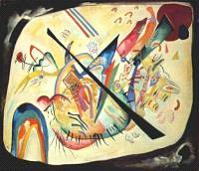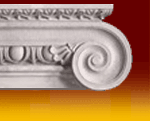|
The German Expressionist group Der Blaue Reiter was founded in Munich in 1911 by Wassily Kandinsky (whose works later inspired
those of the early Abstract Expressionists) and Franz Marc. Both men loved blue, and the name of the group was inspired by
Marc's paintings of blue horses and Kandinsky's paintings of horsemen dressed in blue. Other leading members of the group
were Alexey von Jawlensky, Paul Klee and August Macke. The group was highly informal, and therefore Fauvists and Cubists,
as well as artists from the contemporary Expressionist group Die Brücke were welcome to exhibit their works with those of
Der Blaue Reiter.
The group did not adhere to a specific style of painting, but was categorised by their desire to visually portray emotions
and what was sometimes referred to as 'inner impulses' at exhibitions. Kandinsky developed the theory that in every person
was an inner and outer world, and that art was a means to link the two realms together. He hypothesised that through art colour
and form (traits of the outer world) could portray the nature of the artist's emotions (the inner world). Employing this theory
in his painting, Kandinsky created what is remarked as the first 'completely abstract painting in history'.
The group dissolved in 1914 at the beginning of World War I, but largely influenced the works produced in the Bauhaus
School, where Klee and Kandinsky later taught.

"White Oval" (1919) - Wassily Kandinsky
The use of colour and form in this painting are exemplary of Kandinsky's theory of abstract art: the visual traits of
the painting are not intended to portray or relate to anything tangible, rather to show emotion and thought in a visual sense.
Back
|

